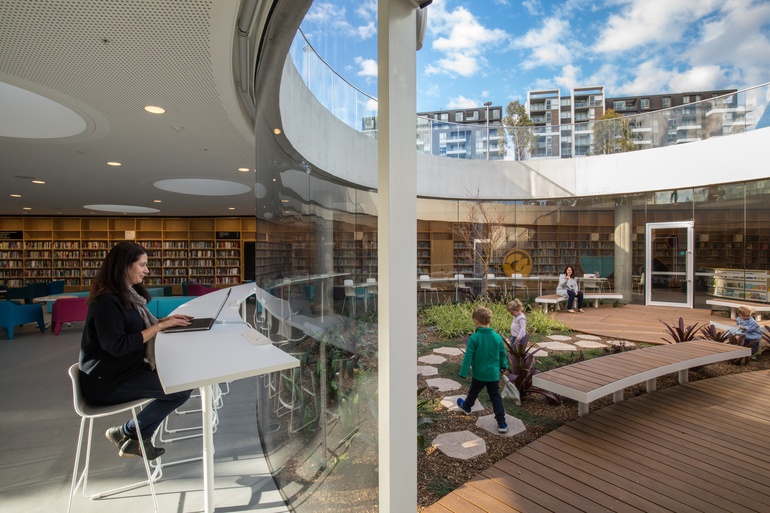Four big steps on the way to sustainable social infrastructure
28 Jun 2021
Sandra Qian, Senior Manager – Policy and Government Relations, Green Building Council of Australia
Good infrastructure investment does more than build the bricks-and-mortar backbone of communities or move people from A to B. It also helps us deliver on a host of priorities that boost community resilience, enhance liveability and meet long-term challenges like climate change.
We know every dollar invested in public infrastructure delivers around four dollars of value in GDP over the life of the asset. We also know that buildings account for over 20% of greenhouse gas emissions and one of the most cost-effective ways Australia can meet its Paris Agreement targets is by reducing these emissions [1].
Our new report released with New Zealand Green Building Council (NZGBC), Green Star in focus: the case for sustainable social infrastructure, finds that sustainable infrastructure doesn’t just help governments achieve climate targets and reduce costs, it also gives communities the healthy, sustainable and resilient places they are asking for.
As the nation’s authority on sustainable buildings and places, we work closely with government members and stakeholders to squeeze even more out of infrastructure investment by urging governments to seize the many available opportunities.
Lead by example
As some of the largest asset owners and tenants, government can use their strong market presence and buying power to drive improvements in the sustainable performance of their assets.
Governments should lead by example and commit to net zero carbon across buildings that they own and lease. This can be achieved with requirements for both embodied carbon and operational emissions, which should keep government ahead of minimum standards required by building codes.”
The NSW Government’s Government Resource Efficiency Policy (GREP) is a good example of a policy that aims to reduce the operating costs of NSW Government agencies and make sure that they provide leadership in resource productivity. The GREP requires government bodies to consider sustainability in their approach to all major projects and decisions.
These good outcomes can be further encouraged by making sustainability a key performance indicator for senior department staff and executives.
Embrace established rating systems
Established and trusted rating systems like Green Star or NABERS validate sustainable design, construction and operational performance outcomes.
Take the City of Sydney’s Green Square Library. Built on land that was once a swamp, the underground 2,300 sqm library is flooded with natural light, thanks to 49 skylights, while a subterranean garden provides quiet space to read in the fresh air. A central wastewater system and low-energy displacement ventilation system contributed to the library’s Green Star rating which was originally set to 5 Stars but reached a world leading 6 Stars instead.
You’ll find Green Star in hospitals and health facilities too and in 2017 and 2018 our own analysis of Green Star certified hospitals showed they produce 57% fewer GHG emissions than average healthcare buildings. Overall, Green Star rated healthcare facilities in Australia are saving over 35,000 tonnes of GHG emissions every year.
Looking ahead, our Green Star Future Focus program will deliver new rating tools that will help governments meet their climate change, resilience and risk adaptation objectives, while also meeting community expectations and the United Nations’ Sustainable Development Goals.

Embed sustainability into planning processes
Land use planning policy and regulation is a cornerstone of low emissions buildings, infrastructure and precincts in our cities and communities. Consistent planning policies can facilitate and incentivise the delivery of net zero emissions buildings and infrastructure.
The City of Melbourne’s climate change mitigation strategy outlines key actions to deliver zero emissions buildings and precincts, demonstrative innovative carbon positive design and operation of the City’s own assets. To do this, the City is using Green Star and the Green Building Council of Australia Carbon Positive Roadmap, which outlines how the built environment can help Australia meet its greenhouse gas emissions reductions targets.
There is a significant opportunity to deliver emissions reduction through state and local planning instruments that align with a national trajectory towards zero carbon ready buildings.

Shine a light on sustainability outcomes
Raising awareness for the great outcomes delivered by sustainable infrastructure can lead to more uptake across governments and private operators.
In universities, there are several well documented advantages to Green Star certification ranging from improvements to student test scores, greater staff retention and improvements in health outcomes [2].
The University of Technology Sydney has adopted Green Star for all new buildings as they consider unrated building to be at a disadvantage in relation to occupier comfort, health and wellbeing and operational running costs.
Governments should promote achievements like these across departments and agencies, industry and the wider community.
Anecdotal evidence suggests that when procurement targets and rating tool commitments are regularly discussed by senior officials and public servants, this drives a whole-of-government approach to ensuring that sustainability is a priority and keeps project teams on track.
[1] thinkstep. 2018. The carbon footprint of NZ’s built environment: Hotspot or not? (p.3)
[2] Green star in focus: the business case.